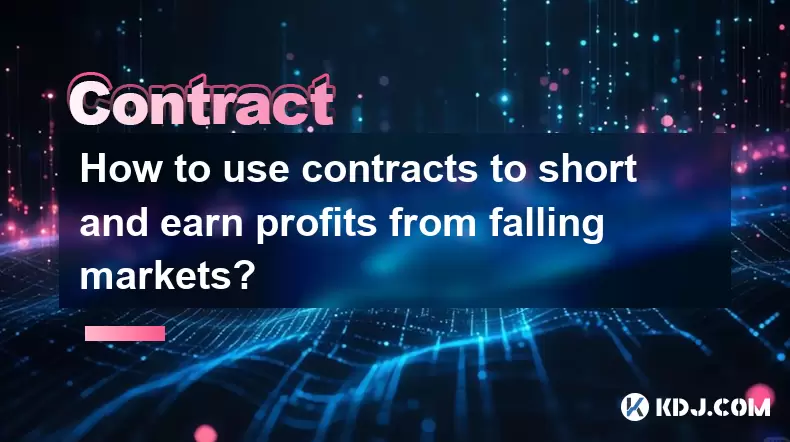-
 Bitcoin
Bitcoin $106,437.2012
0.82% -
 Ethereum
Ethereum $2,442.5287
0.82% -
 Tether USDt
Tether USDt $1.0005
-0.02% -
 XRP
XRP $2.1812
-0.27% -
 BNB
BNB $645.1327
0.45% -
 Solana
Solana $146.2379
0.39% -
 USDC
USDC $0.9999
-0.01% -
 TRON
TRON $0.2751
0.92% -
 Dogecoin
Dogecoin $0.1662
-0.23% -
 Cardano
Cardano $0.5827
-1.22% -
 Hyperliquid
Hyperliquid $37.5225
0.04% -
 Bitcoin Cash
Bitcoin Cash $479.0877
4.02% -
 Sui
Sui $2.7846
-3.27% -
 Chainlink
Chainlink $13.3576
0.84% -
 UNUS SED LEO
UNUS SED LEO $9.0252
-1.20% -
 Stellar
Stellar $0.2455
-1.07% -
 Avalanche
Avalanche $18.0680
-1.81% -
 Toncoin
Toncoin $2.8948
-1.07% -
 Shiba Inu
Shiba Inu $0.0...01164
-1.65% -
 Litecoin
Litecoin $85.0637
-0.06% -
 Hedera
Hedera $0.1526
-0.89% -
 Monero
Monero $316.2941
0.78% -
 Ethena USDe
Ethena USDe $1.0003
-0.04% -
 Polkadot
Polkadot $3.4113
-1.87% -
 Dai
Dai $1.0000
-0.01% -
 Bitget Token
Bitget Token $4.4488
5.16% -
 Uniswap
Uniswap $7.1740
3.09% -
 Pi
Pi $0.5968
11.43% -
 Pepe
Pepe $0.0...01010
-0.65% -
 Aave
Aave $264.3189
0.40%
How to use contracts to short and earn profits from falling markets?
Shorting crypto allows traders to profit from falling prices using futures or perpetual contracts, offering opportunities in both bullish and bearish markets.
Jun 25, 2025 at 10:22 am

Understanding Shorting in Cryptocurrency Trading
In the world of cryptocurrency trading, shorting refers to the practice of betting against the price of an asset, expecting it to decline. When traders believe that a particular cryptocurrency will fall in value, they can take advantage of this by opening a short position through derivatives such as futures or perpetual contracts. This strategy allows them to profit from downward market movements.
Unlike traditional spot trading, where profits are made only when prices rise, shorting provides opportunities in both bullish and bearish markets. It is especially valuable during market corrections or bearish cycles, which are common in the volatile crypto space.
Choosing the Right Contract Type for Shorting
To effectively short cryptocurrencies, traders must choose the appropriate contract type. The most popular options include:
- Futures Contracts: These are agreements to buy or sell an asset at a predetermined price on a specified future date.
- Perpetual Contracts: Similar to futures but without an expiration date, making them more flexible for traders.
- Inverse Contracts: Denominated in the underlying cryptocurrency (e.g., BTC), these contracts settle in crypto rather than fiat.
Each contract type has its own margin requirements, funding fees, and settlement mechanisms. For example, perpetual contracts often involve periodic funding payments, which can either be positive or negative depending on whether the trader is long or short. Understanding these nuances is crucial before initiating any trade.
Setting Up a Trading Account and Margin Configuration
Before entering into a short trade, you need to set up a trading account on a platform that offers derivative products. Popular platforms include Binance, Bybit, OKX, and KuCoin Futures. Once registered, complete the following steps:
- Deposit funds: Transfer either stablecoins or native tokens like USDT, USDⓈ, or BTC to your futures wallet.
- Enable margin mode: Choose between isolated and cross margin settings. Isolated margin limits risk to the allocated amount per trade, while cross margin uses the entire account balance as collateral.
- Set leverage: Leverage amplifies both gains and losses. Beginners should start with low leverage (e.g., 2x–5x) until comfortable with the mechanics of shorting.
It’s essential to monitor liquidation prices, which indicate the point at which your position will be automatically closed due to insufficient margin. Setting proper stop-loss levels helps avoid unexpected liquidations.
Executing a Short Trade Step-by-Step
Once your account is properly configured, follow these steps to open a short position:
- Navigate to the derivatives section of your chosen exchange.
- Select the cryptocurrency pair you want to short (e.g., BTC/USDT).
- Switch to the sell tab or select the “short” option if available.
- Enter the quantity you wish to short based on your margin and leverage settings.
- Choose the order type: Market orders execute immediately at current prices, while limit orders allow setting specific entry points.
- Confirm the trade and monitor your position size, entry price, and unrealized PnL.
After opening the position, keep track of market trends, news events, and technical indicators that could affect the price movement. Timely exits are critical to locking in profits or minimizing losses.
Managing Risk While Shorting Crypto Contracts
Shorting comes with significant risks, especially in the highly volatile crypto market. Here are some strategies to manage those risks effectively:
- Always use stop-loss orders to limit potential losses if the market moves against your position.
- Avoid over-leveraging; higher leverage increases exposure and the likelihood of liquidation.
- Diversify across multiple assets to reduce reliance on a single trade outcome.
- Monitor funding rates for perpetual contracts, as prolonged holding may incur cumulative costs.
- Stay updated with regulatory developments and macroeconomic factors, which can trigger sudden price swings.
Risk management is not optional—it is a necessity when engaging in leveraged short trades.
Frequently Asked Questions (FAQs)
Q: Can I short Bitcoin directly on spot exchanges?
A: No, spot exchanges do not support direct shorting. You need to use futures or perpetual contracts on a derivatives-enabled exchange to bet against Bitcoin's price.
Q: What happens if my short position gets liquidated?
A: Liquidation occurs when your account equity falls below the required maintenance margin. The system will automatically close your position to prevent further losses beyond your deposited funds.
Q: How do funding fees affect my short position on perpetual contracts?
A: Funding fees are periodic payments exchanged between long and short traders. If you're short and the funding rate is positive, you'll receive payments; if it's negative, you'll pay longs.
Q: Is shorting legal and supported everywhere?
A: While shorting is permitted on most major crypto exchanges, availability may vary by jurisdiction. Some countries impose restrictions on leveraged trading and derivatives, so always check local regulations before trading.
Disclaimer:info@kdj.com
The information provided is not trading advice. kdj.com does not assume any responsibility for any investments made based on the information provided in this article. Cryptocurrencies are highly volatile and it is highly recommended that you invest with caution after thorough research!
If you believe that the content used on this website infringes your copyright, please contact us immediately (info@kdj.com) and we will delete it promptly.
- Dogecoin's Crossroads: Buy Signal or Risky Business?
- 2025-06-25 18:25:12
- Pi Network Price Prediction: Navigating the Coin's Breakout and Potential Drop
- 2025-06-25 18:25:12
- Green Minerals, Panther Metals, and the Bitcoin Buy-In: A New Era for Mining?
- 2025-06-25 18:35:13
- Shiba Inu, Dogecoin, and Meme Coins: What's the Hype in 2025?
- 2025-06-25 16:25:12
- JasmyCoin's Wild Ride: 6x Setup or Just a Mirage?
- 2025-06-25 16:25:12
- Mastercard's Stablecoin Integration: Revolutionizing On-Chain Commerce, NY Style
- 2025-06-25 16:45:12
Related knowledge

How to use the price slope to filter the false breakthrough signal of the contract?
Jun 20,2025 at 06:56pm
Understanding the Concept of Price Slope in Contract TradingIn contract trading, especially within cryptocurrency derivatives markets, price slope refers to the rate at which the price changes over a specific time period. It helps traders assess the strength and sustainability of a trend. A steep slope may indicate strong momentum, while a shallow slope...

How to determine the expected volatility of the contract through the volatility cone?
Jun 19,2025 at 12:28pm
Understanding the Basics of Volatility in Cryptocurrency ContractsIn the realm of cryptocurrency trading, volatility is a key metric that traders use to assess potential risk and reward. When dealing with futures contracts, understanding how volatile an asset might become over time is crucial for position sizing, risk management, and strategy developmen...

How to formulate a contract intraday trading plan in combination with the pivot point system?
Jun 21,2025 at 03:42pm
Understanding the Basics of Pivot Points in Cryptocurrency TradingPivot points are technical analysis tools used by traders to identify potential support and resistance levels. These levels are calculated using the previous day's high, low, and closing prices. In the context of cryptocurrency trading, where markets operate 24/7, pivot points help trader...

How to adjust the contract position ratio through the price fluctuation entropy?
Jun 22,2025 at 11:42am
Understanding Price Fluctuation Entropy in Cryptocurrency ContractsIn the world of cryptocurrency futures trading, price fluctuation entropy is a relatively new concept used to measure market volatility and uncertainty. It derives from information theory, where entropy refers to the degree of randomness or unpredictability in a system. In crypto contrac...

How to use the volume swing indicator to predict the contract volume-price divergence?
Jun 18,2025 at 11:42pm
Understanding the Volume Swing IndicatorThe volume swing indicator is a technical analysis tool used primarily in cryptocurrency trading to evaluate changes in volume over time. Unlike price-based indicators, this metric focuses solely on trading volume, which can provide early signals about potential market reversals or continuations. The key idea behi...

How to use the Gaussian channel to set the contract trend tracking stop loss?
Jun 18,2025 at 09:21pm
Understanding the Gaussian Channel in Cryptocurrency TradingThe Gaussian channel is a technical indicator used primarily in financial markets, including cryptocurrency trading, to identify trends and potential reversal points. It is based on statistical principles derived from the normal distribution, commonly known as the Gaussian distribution or bell ...

How to use the price slope to filter the false breakthrough signal of the contract?
Jun 20,2025 at 06:56pm
Understanding the Concept of Price Slope in Contract TradingIn contract trading, especially within cryptocurrency derivatives markets, price slope refers to the rate at which the price changes over a specific time period. It helps traders assess the strength and sustainability of a trend. A steep slope may indicate strong momentum, while a shallow slope...

How to determine the expected volatility of the contract through the volatility cone?
Jun 19,2025 at 12:28pm
Understanding the Basics of Volatility in Cryptocurrency ContractsIn the realm of cryptocurrency trading, volatility is a key metric that traders use to assess potential risk and reward. When dealing with futures contracts, understanding how volatile an asset might become over time is crucial for position sizing, risk management, and strategy developmen...

How to formulate a contract intraday trading plan in combination with the pivot point system?
Jun 21,2025 at 03:42pm
Understanding the Basics of Pivot Points in Cryptocurrency TradingPivot points are technical analysis tools used by traders to identify potential support and resistance levels. These levels are calculated using the previous day's high, low, and closing prices. In the context of cryptocurrency trading, where markets operate 24/7, pivot points help trader...

How to adjust the contract position ratio through the price fluctuation entropy?
Jun 22,2025 at 11:42am
Understanding Price Fluctuation Entropy in Cryptocurrency ContractsIn the world of cryptocurrency futures trading, price fluctuation entropy is a relatively new concept used to measure market volatility and uncertainty. It derives from information theory, where entropy refers to the degree of randomness or unpredictability in a system. In crypto contrac...

How to use the volume swing indicator to predict the contract volume-price divergence?
Jun 18,2025 at 11:42pm
Understanding the Volume Swing IndicatorThe volume swing indicator is a technical analysis tool used primarily in cryptocurrency trading to evaluate changes in volume over time. Unlike price-based indicators, this metric focuses solely on trading volume, which can provide early signals about potential market reversals or continuations. The key idea behi...

How to use the Gaussian channel to set the contract trend tracking stop loss?
Jun 18,2025 at 09:21pm
Understanding the Gaussian Channel in Cryptocurrency TradingThe Gaussian channel is a technical indicator used primarily in financial markets, including cryptocurrency trading, to identify trends and potential reversal points. It is based on statistical principles derived from the normal distribution, commonly known as the Gaussian distribution or bell ...
See all articles























































































